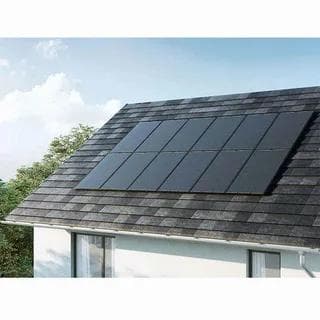Exploring the Energy Chain for a Solar Panel System

Published 05-30-2025
Share to social media
One of the important components of contemporary renewable energy is solar panels. If we think about a clean and sustainable substitute for fossil fuels, then the solar panel system comes to our minds. Energy Chain For a Solar Panel covers all the steps for capturing the sunlight, converting it into electricity and then distributing this energy.
Its benefits include harvesting sunshine to provide homes and businesses with easy-to-use electricity. Let’s explore more about this energy chain and find out all the details below.
What are the Steps Involved in Capturing the Sunlight?
The Heart of Solar Panels
Undoubtedly, photovoltaic cells i.e, the semiconductor devices are considered the heart of the solar panels. These cells use the photovoltaic effect and convert the sunlight directly into electricity. Greater the quality of the silicon and cell design, greater will be the efficiency of the cells. 15-22% is the standard value of conversion done by these cells.
The Only Power Source
There is only one energy input for the solar panels and that is the sunlight that reaches the Earth’s surface. Latitude, weather, time, season, and pollution highly affect this input. Solar radiation reach in greater amounts to the equator and much less to the poles. 1000 watts per square meter of solar power can be produced on a bright sunny day.
The Design and Physical Setup of Solar Panels
The Energy Chain For a Solar Panel is highly impacted by the design and physical setup of the solar panels. It is necessary to place the solar panels in such an orientation that will capture most of the radiation coming in its direction. The tilted position is considered one of the best positions, however, the tracking systems adjust the orientation of panels in order to follow the path of the sun.
How is Sunlight Converted into Electricity?
The Generation of Direct Current
Most of the household appliances work on alternating current (AC), however, photovoltaic cells capture energy and convert it into direct current (DC) that flows only in one direction. The current must change the direction periodically in order to maintain the Energy Chain For a Solar Panel. To maintain this, the direct current (DC) must be converted into alternating current (AC).
Understanding the Use of Inverters
Just as we discussed earlier, the conversion of DC into AC is essential; here comes the inverter. Inverters are of various kinds for example, string inverters, microinverters, as well as power optimizers. A new technology known as the Maximum Power Point Tracking (MPPT) is being used nowadays to adjust the electrical load on the solar panels. Inverters make sure that electricity meets the standards of the grid.
The Solutions for Energy Storage
Have you ever wondered how energy is produced in the absence of sunlight? The answer is energy storage batteries. Lithium-ion, lead-acid, or emerging technologies like flow batteries are capable of storing the excess energy produced during sunny hours. This energy can be utilized later during the nighttime or on cloudy days. This minimizes the reliance of users on the grid.
The Distribution and Management of Electricity
Grid-tied Solar Systems
One of the most common methods of energy distribution is grid-tied solar systems. Here, the solar panels are connected to the local electrical grid. The excess energy is fed back into the grid which is used during low solar production. Net-metering and feed-in tariff programs are the mechanisms used for this purpose. Through this grid connection, the reliability of the battery storage system is reduced.
The Hybrid and Off-Grid Solar Systems
There are some areas where the availability of a grid is not possible i.e, rural areas. In these areas, the off-grid systems play a huge role in maintaining the energy chain. The batteries are of great importance here and are controlled by charge controllers. Moreover, one more system is the hybrid system that involves a combination of grid and batteries. It benefits the areas that face frequent outages.
The Monitoring Platforms and EMS
To manage the energy consumption, one must stay updated with all the data related to this solar system. The data includes energy production, consumption, and battery status. This data is provided by monitoring platforms and EMS i.e, energy management systems. People can make informed decisions and manage their high to low energy activities according to the time and weather.
Final Thoughts
In conclusion, the Energy Chain For a Solar Panel is basically a stepwise process of capturing energy and distributing electricity. A very sophisticated technology is used in every step of this chain.
One must get this concept in order to maximize the efficiency and sustainability of this solar system. In short, we can say that this energy chain is trying its best to unlock the full potential of the sun and pave the way toward a brighter future.
That being said, if you want to get a solar panel for your house and are looking for the right business to connect with, then you should hit us up at Sun Studios.